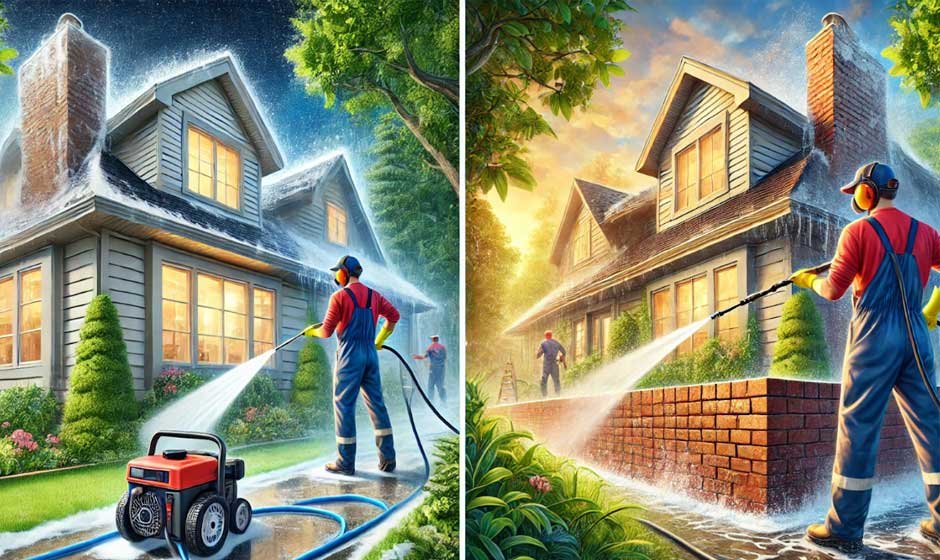Keeping your home’s exterior in good condition is crucial for enhancing its curb appeal and ensuring long-lasting durability. Over time, siding, roofs, and driveways can accumulate dirt, grime, algae, and mold, diminishing your property’s curb appeal and potentially leading to damage. When cleaning your home’s exterior, two popular methods often come into play: soft and pressure washing. Both have unique benefits, but knowing which method suits your needs is key to achieving the best results.
This blog will explore the differences between these cleaning techniques to help you decide what is best for your home.
What is Soft Washing?
Soft washing is a gentle cleaning method that combines low-pressure water and soft wash chemicals to remove dirt, algae, mold, and other contaminants. This technique is particularly effective for cleaning delicate surfaces such as roofs, siding, and windows without causing damage. Unlike pressure washing, which relies on the force of water, soft washing focuses on the chemical solutions to break down and eliminate grime at its root.
The soft washing method is ideal for surfaces that require care and precision. It is commonly used for cleaning asphalt shingles, painted wood, and other surfaces prone to damage under high pressure. Additionally, the biodegradable soft wash chemicals used in this process help prevent the regrowth of harmful microorganisms, keeping your home cleaner for longer.
What is Pressure Washing?
On the other hand, pressure washing uses high-pressure water to blast away dirt, grime, and stains from hard surfaces. This method is highly effective for cleaning driveways, sidewalks, decks, and other durable surfaces that can withstand intense water force. Pressure washing is perfect for removing stubborn stains, such as oil spills or mildew, from concrete or brick.
However, pressure washing is not suitable for every surface. The powerful stream of water can strip paint, damage siding, or even crack delicate materials. It is essential to assess the surface type being cleaned to determine whether pressure washing is the right choice.
Key Differences Between Soft Washing and Pressure Washing
1. Pressure Levels
The most significant difference between the two methods is the water pressure. Soft washing uses low-pressure water, making it safe for fragile surfaces. In contrast, pressure washing uses a high-pressure stream to remove tough dirt and stains.
2. Chemical Usage
Soft washing relies on soft wash chemicals to effectively clean surfaces and prevent regrowth of mold and algae. Pressure washing typically does not involve chemical solutions, relying solely on the force of water to clean.
3. Application
Soft washing is ideal for roofs, siding, and other sensitive areas, while pressure washing is better suited for driveways, patios, and other robust surfaces.
Which Method is Best for Your Home?
Deciding between soft washing and pressure washing depends on the surface you need to clean and the extent of dirt or grime buildup. Soft washing is the safer and more effective option if you are dealing with delicate materials or organic growth like mold and algae. For tough stains and hard surfaces, pressure washing can deliver excellent results.
In many cases, homeowners benefit from using both methods for different areas of their property. For example, soft washing might be ideal for cleaning your roof and siding, while pressure washing can be used for your driveway and patio.
Keeping your home’s exterior clean is not just about aesthetics; it is also about protecting your investment. Understanding the benefits of soft washing versus pressure washing can help you make an informed decision that meets your cleaning needs. Whether you need to restore your roof’s appearance or remove stubborn stains from your driveway, choosing the right cleaning method ensures your home remains safe, beautiful, and well-maintained for years to come.










